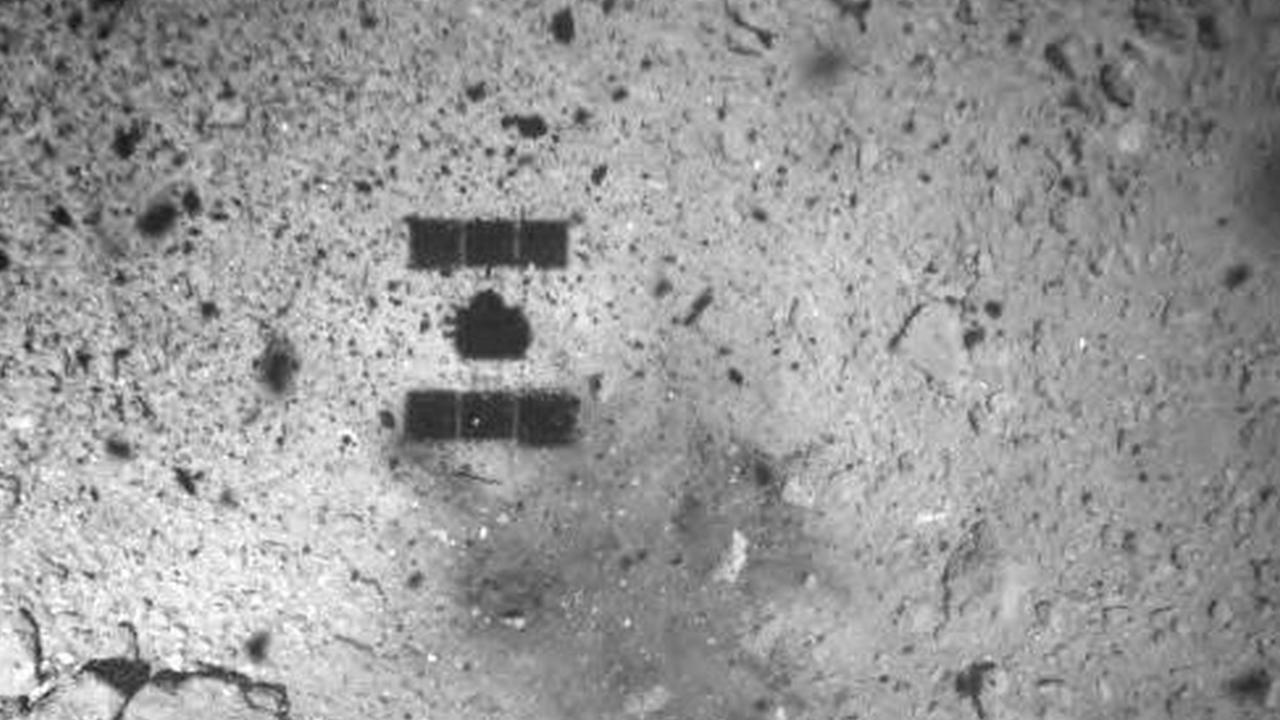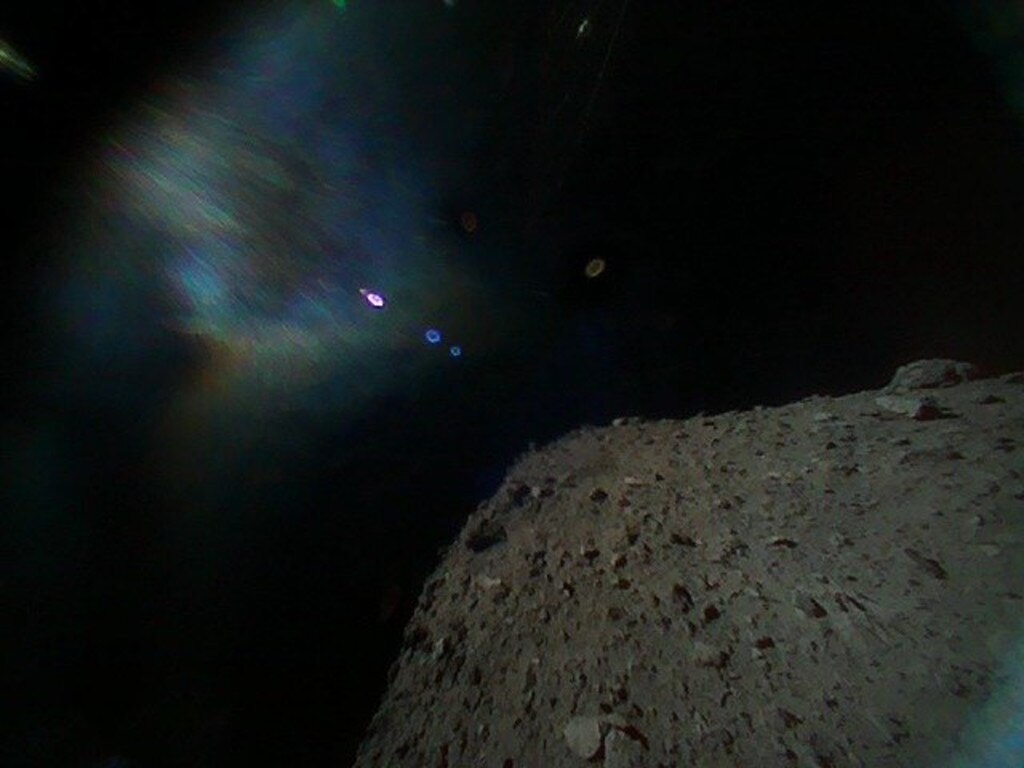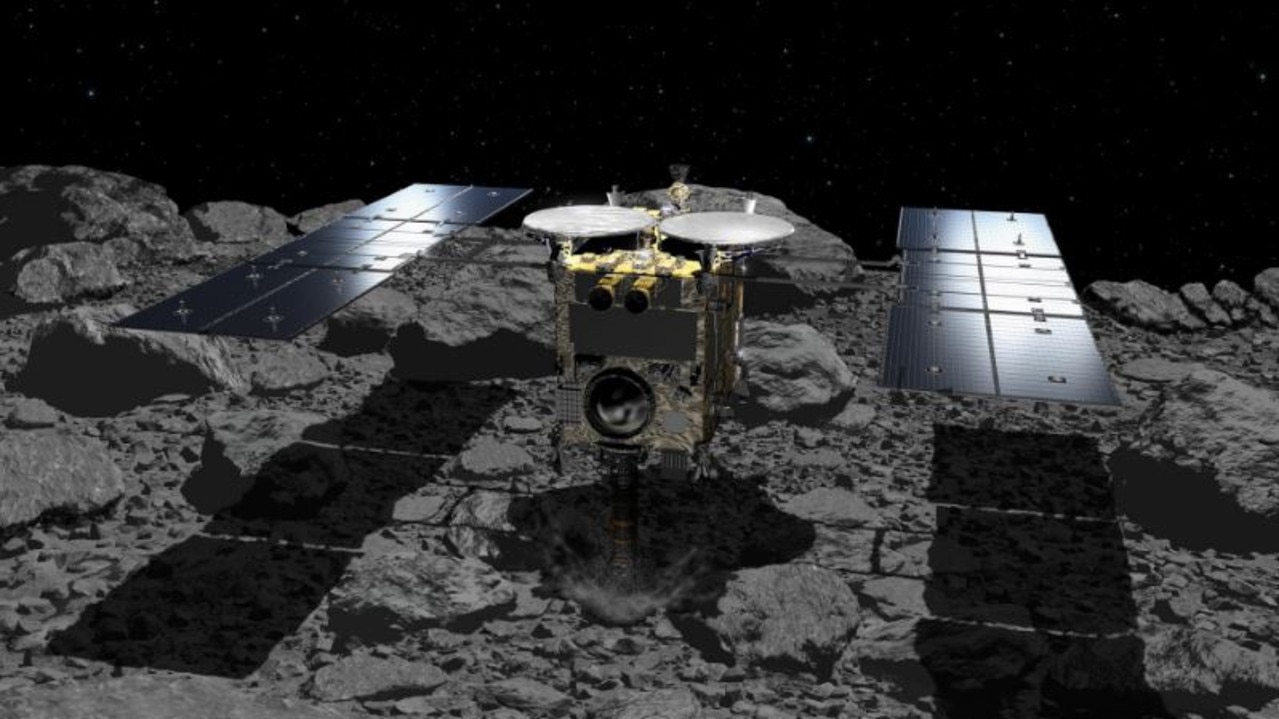Clues from ancient Ryugu asteroid suggest life originated in space
Samples of dust recovered from an ancient asteroid suggest that a key element for life on our planet might have come from space

READING LEVEL: ORANGE
Samples of dust recovered from an ancient* asteroid suggest that a key element for life on our planet might have come from space.
The Ryugu asteroid is about 180 million miles from Earth and is estimated to be about 4.6 billion years old.
In 2019 a Japanese probe, Hayabusa2, made history when it landed on its surface and gathered about 5g of grit and dust.

Those grains have now been found to contain uracil, a compound found in RNA – the substance that copies and ferries genetic information* inside our cells, allowing the production of proteins and therefore enabling life itself.
Uracil is one of four “nucleobases*” that are strung, a little like beads on a necklace, along each RNA strand. They can be thought of as letters, with different sequences forming the codes that produce different proteins.
The nucleobases needed to form both RNA and DNA* have been detected before in meteorites that have crashed to Earth, giving rise to the theory that similar collisions in the distant past contributed to the original emergence of genetic material here.

It is possible, however, that those earlier results were the result of contamination* from Earth’s environment.
However, the Ryugu samples, which date from about the time that the Earth was forming, should be pristine*.
“The findings suggest that nucleobases, such as uracil, have an extraterrestrial* origin and were delivered to Earth by carbon-rich meteorites,” the research team said.

If the molecules that make up RNA and DNA are found in rocks from space there may also be implications for the distribution of life across the wider universe.
During the Earth’s formation, elements and compounds with low boiling points as well as many organic molecules would not have been present. Many of them, including water, may have been delivered later, via meteorite strikes.

The researchers also found vitamin B3, which is important for metabolism*, in the Ryugu samples.
Hayabusa2, which was about the size of a large refrigerator, was launched from Japan in December 2014 and took almost four years to reach the asteroid, which measures just over 800m across.
In 2019 it landed twice on Ryugu, fired metal bullets into its surface to break it up and retrieved sub-surface matter.

The space capsule carrying the samples from Ryugu returned to Earth, landing in the South Australian outback.
“Since the Hayabusa2 spacecraft collected two samples directly from asteroid Ryugu and delivered them to Earth in sealed capsules, contamination can be ruled out,” said Professor Yasuhiro Oba, of Hokkaido University in Japan, who led the research.
His team extracted the uracil and B3 molecules by soaking particles from Ryugu in hot water. They were identified using a technique known as liquid chromatography* coupled with high-resolution mass spectrometry*.
The findings were published in Nature Communications.
This story was originally published by The Times and is reproduced here with permission.
GLOSSARY
- ancient: belonging to the very distant past
- genetic information: information about a living things that determines traits and passed on from generation to generation
- nucleobases: groups of nucleotides make up genes and determine things like a person’s height and hair and eye colour
- DNA: stands for deoxyribonucleic and is the genetic information inside the cells of the body that helps make people who they are
- contamination: to soil, stain, or infect by contact or association
- pristine: remaining in a pure state, without human alteration
- extraterrestrial: originating, existing, or occurring outside the earth or its atmosphere
- metabolism: the chemical reactions in the body’s cells that change food into energy
- chromatography: a technique used to separate mixtures
- spectrometry: an analytical technique used to identify an unknown organic compound
EXTRA READING
Splash down for space travellers after five months in orbit
Mystery lunar sample to share its secrets
QUICK QUIZ
- How old is the Ryugu asteroid estimated to be?
- What year did the Japanese probe Hayabusa2 make history when it landed on the surface of the Ryugu asteroid to gather about 5g of grit and dust?
- What is uracil and why is it important?
- Where did the space capsule carrying the samples from Ryugu land when it returned to Earth?
- What vitamin that is important for metabolism was found by researchers within the Ryugu samples?
LISTEN TO THIS STORY
CLASSROOM ACTIVITIES
1. An inexact science
You may have noticed in this news story words or phrases used that indicate that some of the details are not exact or not known for sure. Examples include: Samples of dust recovered from an ancient asteroid suggest... and The Ryugu asteroid is about 180 million miles from Earth and is estimated to be about 4.6 billion years old.
Write an explanation to tell why you think these types of words or phrases have been used in the story.
Then, highlight or copy other examples of these types of words or phrases that have been used.
Time: allow 20 minutes to complete this activity
Curriculum Links: English; Science
2. Extension
Where ideas may be difficult to understand, the author has made comparisons to familiar items to aid the reader. This includes describing the nucleobases like beads on a necklace and comparing the size of the Hayabusa2 to a large refrigerator.
Make some comparison suggestions that will help a reader better understand how much "about 5g of dirt and dust" is.
(Perhaps you could use scales to measure 5g of dirt to help you get started.)
Time: allow 10 minutes to complete this activity
Curriculum Links: English; Mathematics
VCOP ACTIVITY
Improving Conjunctions: Samples of Dust from an Ancient Asteroid
Instructions: Read the article about the discovery of uracil in the samples of dust from the Ryugu asteroid. Use conjunctions to combine sentences and make them more complex. Choose the appropriate conjunctions from the list provided.
Conjunctions: and, but, or, so, yet, because, although, while, since, if, when
- The Ryugu asteroid is about 180 million miles from Earth. It is estimated to be about 4.6 billion years old.
- In 2019, a Japanese probe named Hayabusa2 landed on the surface of the Ryugu asteroid. It gathered about 5g of grit and dust.
- Uracil is a compound found in RNA. It allows the production of proteins and enables life itself.
- Uracil is one of four “nucleobases” that are strung along each RNA strand. Different sequences form the codes that produce different proteins.
- The nucleobases needed to form both RNA and DNA have been detected before in meteorites that have crashed to Earth. This gives rise to the theory that similar collisions in the distant past contributed to the original emergence of genetic material here.
- The Ryugu samples date from about the time that the Earth was forming. They should be pristine.
- The molecules that make up RNA and DNA are found in rocks from space. There may also be implications for the distribution of life across the wider universe.
- During the Earth’s formation, elements and compounds with low boiling points as well as many organic molecules would not have been present. Many of them, including water, may have been delivered later via meteorite strikes.
- The researchers also found vitamin B3, which is important for metabolism, in the Ryugu samples. This is significant because it shows that the asteroid contains other compounds that are important for life.
- The space capsule carrying the samples from Ryugu returned to Earth. It landed in the South Australian outback.
- The uracil and B3 molecules were identified using a technique known as liquid chromatography coupled with high-resolution mass spectrometry. The particles from Ryugu were soaked in hot water to extract the molecules.
- Professor Yasuhiro Oba of Hokkaido University in Japan led the research. He said, “Since the Hayabusa2 spacecraft collected two samples directly from asteroid Ryugu and delivered them to Earth in sealed capsules, contamination can be ruled out.”

